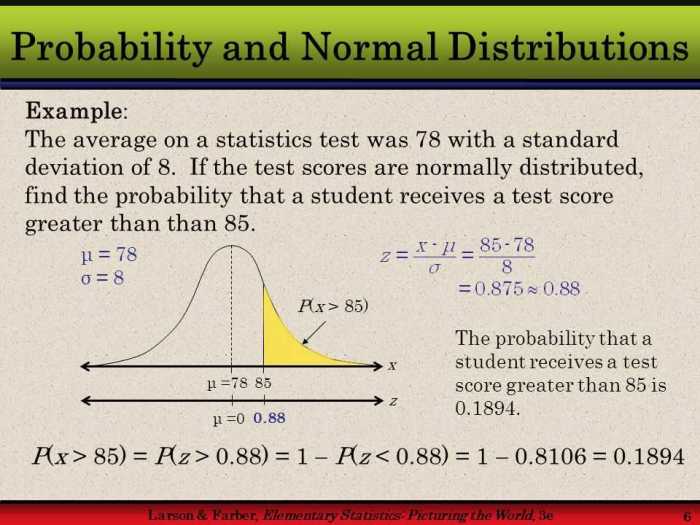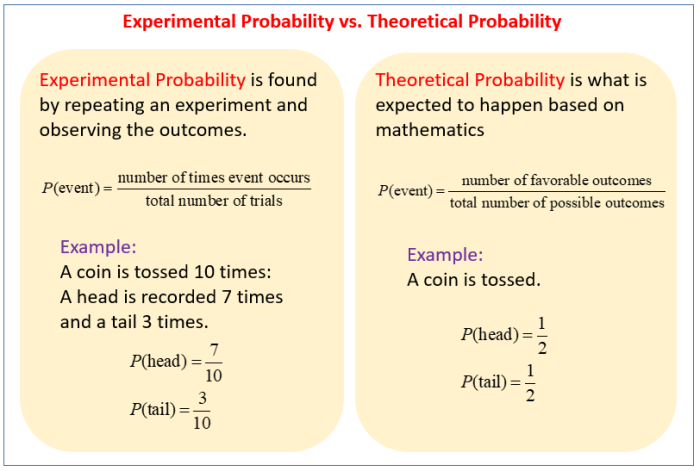Unit 11 probability and statistics homework 2 theoretical probability – Unit 11: Probability and Statistics Homework 2: Theoretical Probability delves into the fascinating world of theoretical probability, where we explore the mathematical foundations of chance and uncertainty. This homework assignment provides a comprehensive understanding of the principles and applications of theoretical probability, equipping students with the tools to analyze and predict random events.
Theoretical probability, unlike experimental probability, relies on mathematical models and logical reasoning to determine the likelihood of an event occurring. It serves as a cornerstone of statistical inference and decision-making, enabling us to make informed judgments based on incomplete information.
Introduction to Theoretical Probability: Unit 11 Probability And Statistics Homework 2 Theoretical Probability

Theoretical probability, a branch of mathematics, provides a framework for calculating the likelihood of events based on mathematical principles. Unlike experimental probability, which relies on empirical observations and data, theoretical probability uses logical reasoning and mathematical models to determine the probability of an event occurring.
For example, in a fair coin toss, theoretical probability calculates the probability of obtaining heads as 1/2, as there are two equally likely outcomes (heads or tails). This calculation is based on the assumption that the coin is unbiased and that each outcome is independent of the other.
Basic Probability Rules
The addition rule of probability states that the probability of two mutually exclusive events (events that cannot occur simultaneously) occurring is equal to the sum of their individual probabilities. For example, if event A has a probability of 0.4 and event B has a probability of 0.3, then the probability of either event A or event B occurring is 0.4 + 0.3 = 0.7.
The multiplication rule of probability states that the probability of two independent events (events that do not influence each other’s occurrence) occurring is equal to the product of their individual probabilities. For example, if the probability of drawing a red card from a deck of cards is 1/4 and the probability of drawing a heart from the same deck is 1/4, then the probability of drawing a red heart is 1/4 – 1/4 = 1/16.
Venn diagrams are graphical representations that can be used to illustrate the relationships between different events. In a Venn diagram, each event is represented by a circle, and the overlap between the circles represents the probability of both events occurring simultaneously.
Conditional Probability
Conditional probability is the probability of an event occurring given that another event has already occurred. It is denoted as P(A|B), where A is the event of interest and B is the condition that has already occurred. The formula for conditional probability is:
P(A|B) = P(A ∩ B) / P(B)
For example, if the probability of drawing a spade from a deck of cards is 1/4 and the probability of drawing a spade that is also an ace is 1/52, then the conditional probability of drawing an ace given that the card is a spade is:
P(Ace|Spade) = P(Ace ∩ Spade) / P(Spade) = 1/52 / 1/4 = 1/13
Independence and Dependence
Independent events are events that do not influence each other’s occurrence. The probability of one event occurring does not affect the probability of the other event occurring. For example, the outcome of a coin toss does not affect the outcome of a subsequent coin toss.
Dependent events are events that influence each other’s occurrence. The probability of one event occurring affects the probability of the other event occurring. For example, the probability of drawing a red card from a deck of cards decreases after a red card has already been drawn.
Independence and conditional probability are closely related. If two events are independent, then the conditional probability of one event given the other event has occurred is equal to the probability of the first event.
Applications of Theoretical Probability, Unit 11 probability and statistics homework 2 theoretical probability
Theoretical probability has a wide range of applications in various fields, including:
- Statistics: Probability theory provides the foundation for statistical inference and hypothesis testing, allowing researchers to make informed decisions based on limited data.
- Decision-making: Probability theory helps decision-makers assess the likelihood of different outcomes and make informed choices under uncertainty.
- Finance: Probability theory is used to model financial markets and assess the risk associated with investments.
- Insurance: Probability theory is used to calculate premiums and determine the likelihood of claims.
- Engineering: Probability theory is used to design reliable systems and predict the probability of failure.
Commonly Asked Questions
What is the difference between theoretical and experimental probability?
Theoretical probability is calculated using mathematical models and logical reasoning, while experimental probability is determined through repeated observations and experiments.
How do you calculate the probability of an event using the addition rule?
The addition rule states that the probability of the union of two disjoint events is equal to the sum of their individual probabilities.
What is the formula for conditional probability?
Conditional probability is calculated as the probability of an event A occurring given that event B has already occurred, and is denoted as P(A|B) = P(A and B) / P(B).

